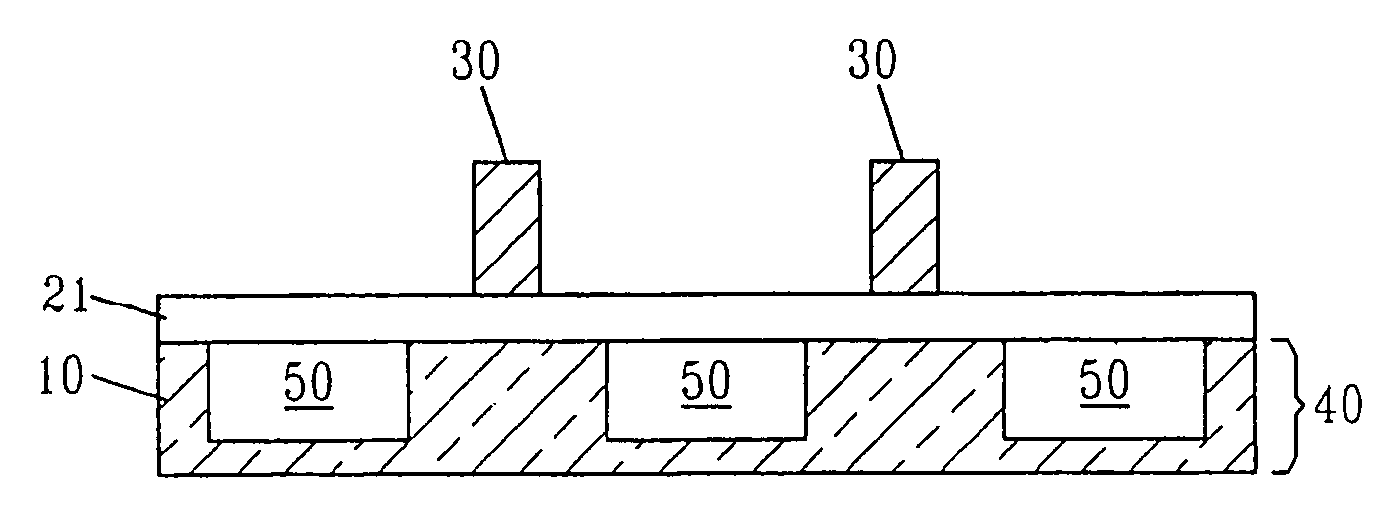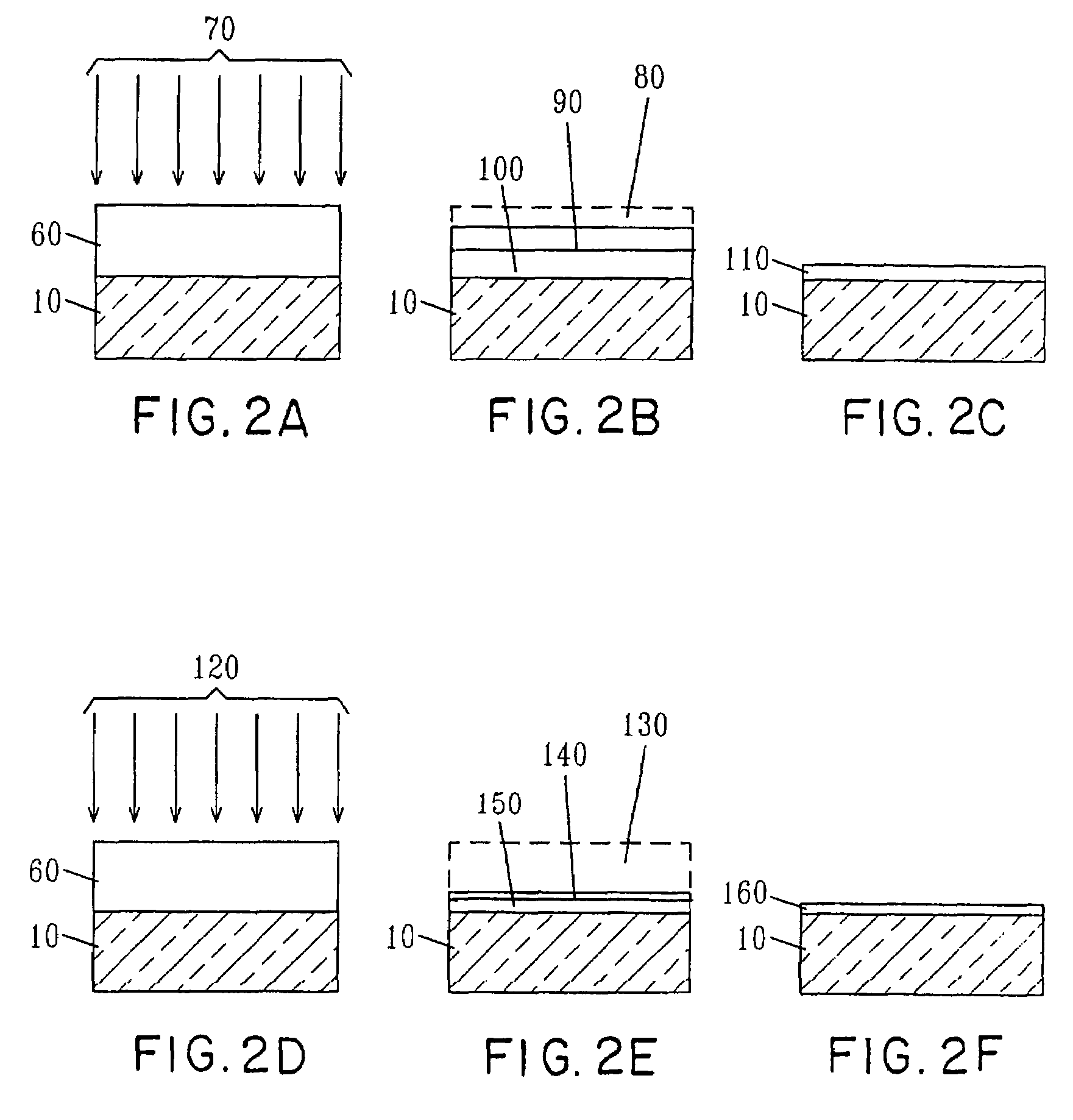Field effect transistor with etched-back gate dielectric
a dielectric and field effect technology, applied in the field of field effect transistors, can solve the problems of difficulty in achieving the desired nitrogen concentration profil
- Summary
- Abstract
- Description
- Claims
- Application Information
AI Technical Summary
Benefits of technology
Problems solved by technology
Method used
Image
Examples
example 1
An Approximately 5 nm HfO2 Film is Thinned to About 3 nm Without Substantial Roughening
[0039]An approximately 4.5 nm thick film of HfO2, impervious to dHF as-deposited, was given an Ar reactive ion etch (RIE) damage treatment in a LAM9400 RIE tool. The conditions were: an Ar pressure of 5 mTorr, an Ar flow of 60 sccm, a top power of 100 W, a bottom power of 300 W, and a self-bias of 160 Vdc, for 10 seconds. The RIE treatment removed about 0–0.5 nm of HfO2. A 30 sec treatment in dHF reduced the film thickness to about 3.2 nm. FIGS. 5A–5B show atomic force microscope (AFM) images of the film before (FIG. 5A) and after (FIG. 5B) the damage / wet etch process. Film roughness was similar before and after the thinning: rms / peak-to-valley roughness was about 2.2 / 7.6 A (before) and about 2.1 / 7.8 A (after).
example 2
An Approximately 3 nm HfO2 Film is Thinned to About 1 nm With Some Roughening
[0040]An approximately 3.1 nm thick film of HfO2 was annealed in N2 at 700° C. for 30 sec to make it impervious to dHF. The film was then given an Ar RIE damage treatment in a LAM9400 RIE tool. The conditions were: an Ar pressure of 5 mTorr, an Ar flow of 60 sccm, a top power of 100 W, a bottom power of 100 W, and a self-bias of 60 Vdc for 30 sec. The RIE treatment removed about 0.6 nm of HfO2. A 2 min treatment in dHF reduced the film thickness to about 1.1 nm. FIGS. 5C–5D show AFM images of the film before (FIG. 5C) and after (FIG. 5D) the damage / wet etch process. Film roughness was substantially greater after the thinning: rms / peak-to-valley roughness was about 2.2 / 6.2 A (before) and about 4.7 / 19 A (after).
[0041]This roughening was attributed to an insufficiently aggressive crystallization anneal (700° C. at 30 seconds in N2), which left the bottom 1–2 nm of the HfO2 film a mixture of crystalline regions...
example 3
A HfO2 Film is Thinned from About 3 nm to About 2 nm By Ar Sputter Etching Without Substantial Roughening
[0042]An approximately 3 nm thick film of HfO2, etchable in dHF as-deposited, was given an Ar RIE thinning treatment in a Unaxis 790 series RIE tool. The conditions were: an Ar pressure of 20 mTorr, an Ar flow of 20 sccm, a bottom power of 200 W, and a self-bias of 420 Vdc, for 2 min. The RIE treatment removed about 1.0 nm of HfO2. The film was annealed in N2 at 700° C. for 1 min to repair any residual RIE damage. FIGS. 5E–5F show AFM images of the film before (FIG. 5E) and after (FIG. 5F) the thinning process. Film roughness was similar before and after thinning: rms / peak-to-valley roughness was about 2.2 / 6.5 A (before) and about 2.1 / 6.6 A (after).
PUM
 Login to View More
Login to View More Abstract
Description
Claims
Application Information
 Login to View More
Login to View More - R&D
- Intellectual Property
- Life Sciences
- Materials
- Tech Scout
- Unparalleled Data Quality
- Higher Quality Content
- 60% Fewer Hallucinations
Browse by: Latest US Patents, China's latest patents, Technical Efficacy Thesaurus, Application Domain, Technology Topic, Popular Technical Reports.
© 2025 PatSnap. All rights reserved.Legal|Privacy policy|Modern Slavery Act Transparency Statement|Sitemap|About US| Contact US: help@patsnap.com



